
Support Team
Feedback:
support@nextpcb.comThe structure of the product needs to be clarified before the PCB layout. The structure needs to be reflected on the PCB board. For example, the thickness of the outer side of the cavity shell, the thickness of the intermediate cavity, the size of the chamfering radius and the size of the screw on the cavity, etc. (in other words, the structural design is based on the outline (structure part) drawn on the completed PCB For specific design). In general, the thickness of the outer cavity is 4mm; the width of the inner cavity is 3mm; the glue dispensing process is 2mm; the chamfer radius is 2.5mm. Taking the lower-left corner of the PCB as the origin, the compartment must be an integer multiple of 0.5, and at least the grid must be an integer multiple of 0.1. This is conducive to structural manufacturers for processing, and the error control is more accurate. Of course, this needs to be designed according to customer requirements. Figure 01 below shows the outline of the structure after the PCB design is completed:
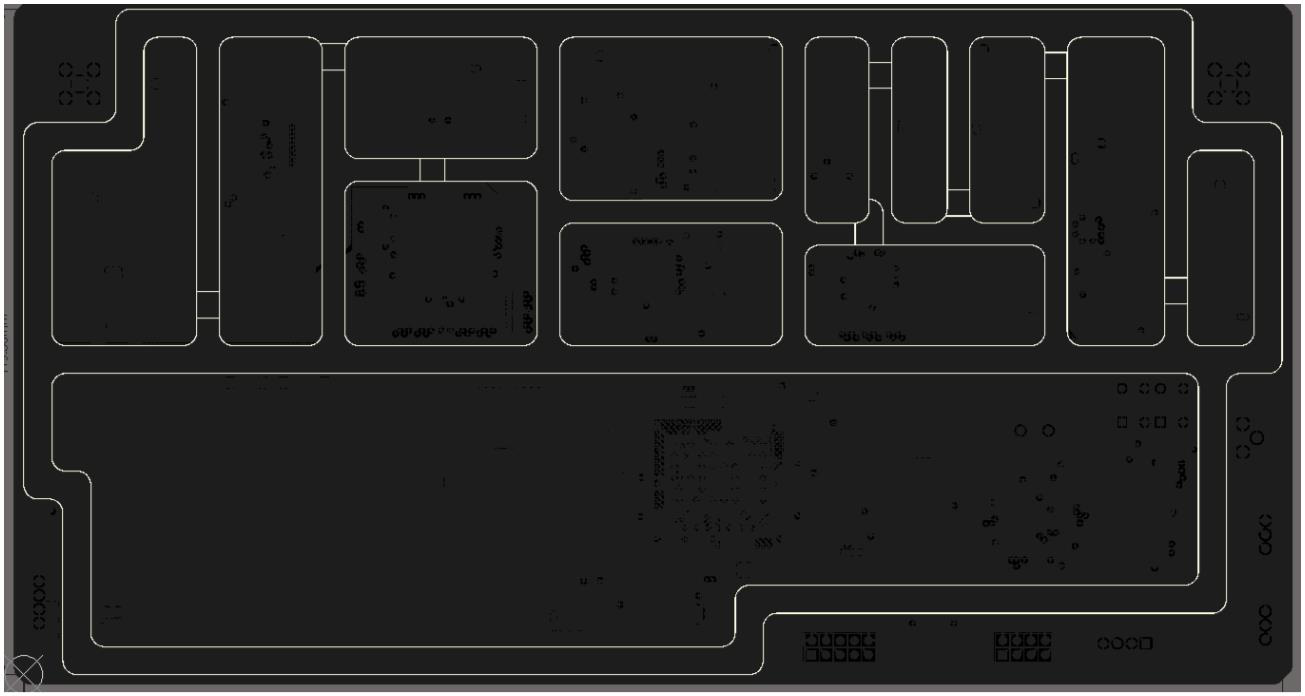
The layout gives priority to the layout of the radio frequency link, and then the layout of other circuits.
Completely follow the sequence of the schematic (input to output, including the sequence of each component and the spacing between components. Some components should not be too far apart, such as π nets.) Layout, the layout is in the shape of "One" or "L".
In the actual RF link layout, due to the space constraints of the product, it is impossible to fully realize it, which forces us to make the layout into a "U" shape. It is not impossible to lay out a U-shape, but it is necessary to add a compartment in the middle to isolate it from the left and right, and to shield it. As shown in Figure 02 below:
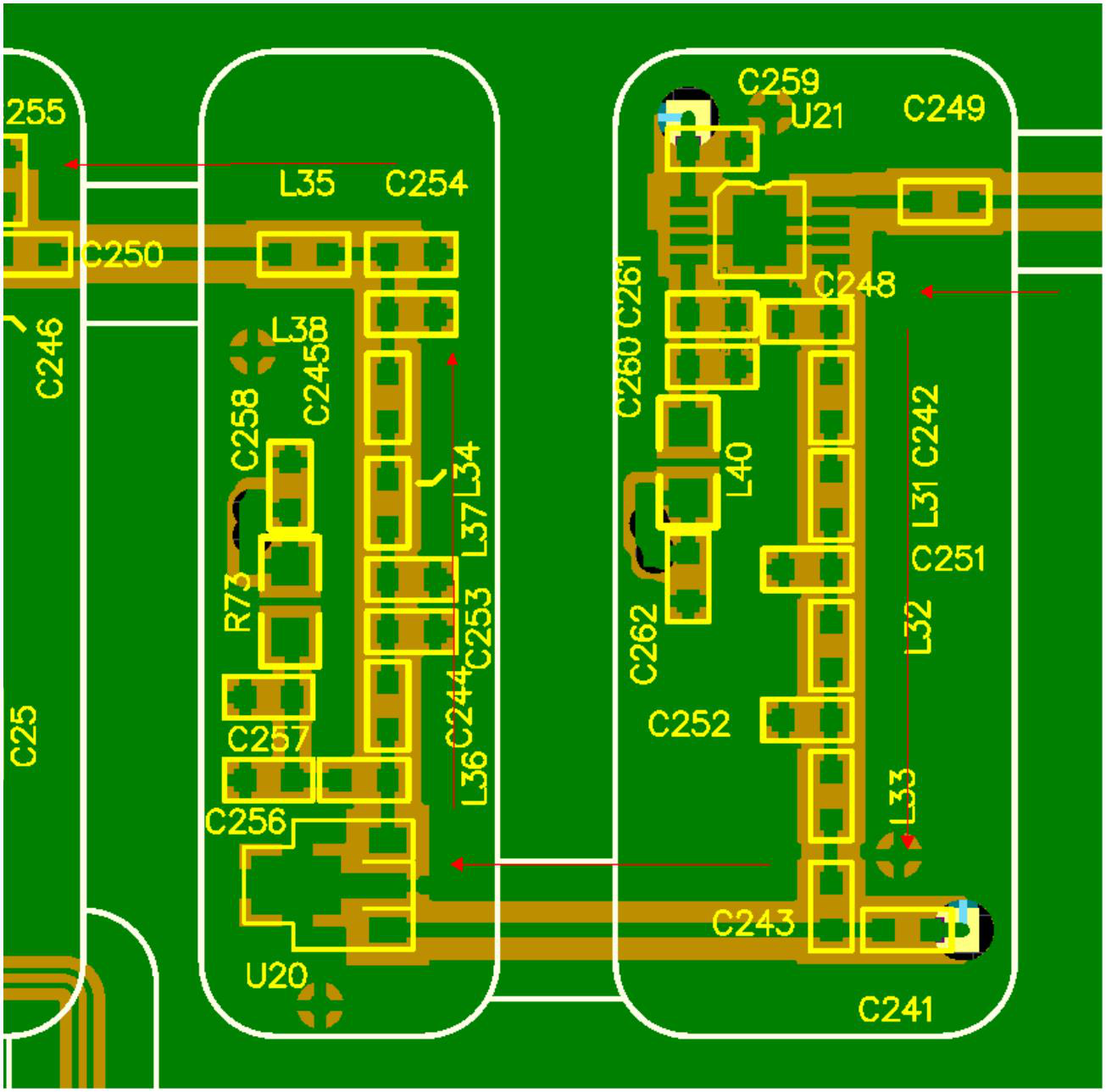
There is also a need to add compartments in the lateral direction. That is, the in-line shape is isolated from the left and right by the compartment. This is mainly because the part that needs to be isolated is very sensitive or easily interferes with other circuits; in addition, there is another possibility that the gain of the in-line input to the output of the circuit is too large, and it needs to be separated by a cavity (if the gain is too large) , The cavity is too large, which may cause self-excitation.). As shown in Figure 03:
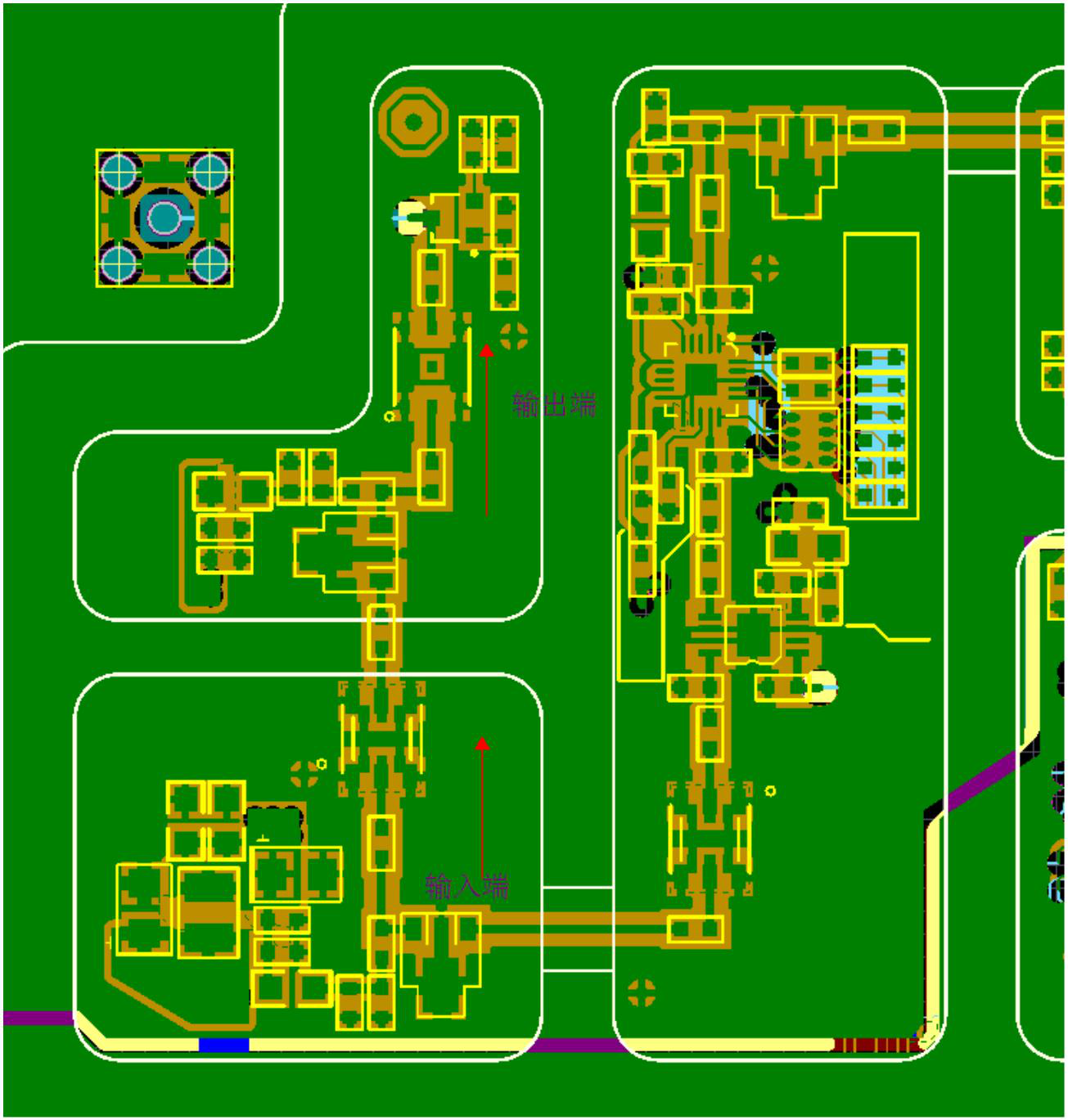
The layout of the peripheral circuit of the radio frequency device strictly refers to the requirements on the datasheet. It can be adjusted due to space constraints; the layout of the peripheral circuit of the digital chip will not be discussed much.
Layout according to the 50 ohm impedance line width, try to go out from the center of the pad, the line should be straight, and try to go on the surface. Make a 45-degree angle or arc trace where you need to turn. It is recommended to turn on both sides of the capacitor or resistor. If you meet the requirements of the device trace matching, please strictly follow the reference value on the datasheet to trace the length. For example, the length of the trace between an amplifier tube and the capacitor (or the length of the trace between the inductors) requirements and so on. As shown in Figure 04 below:
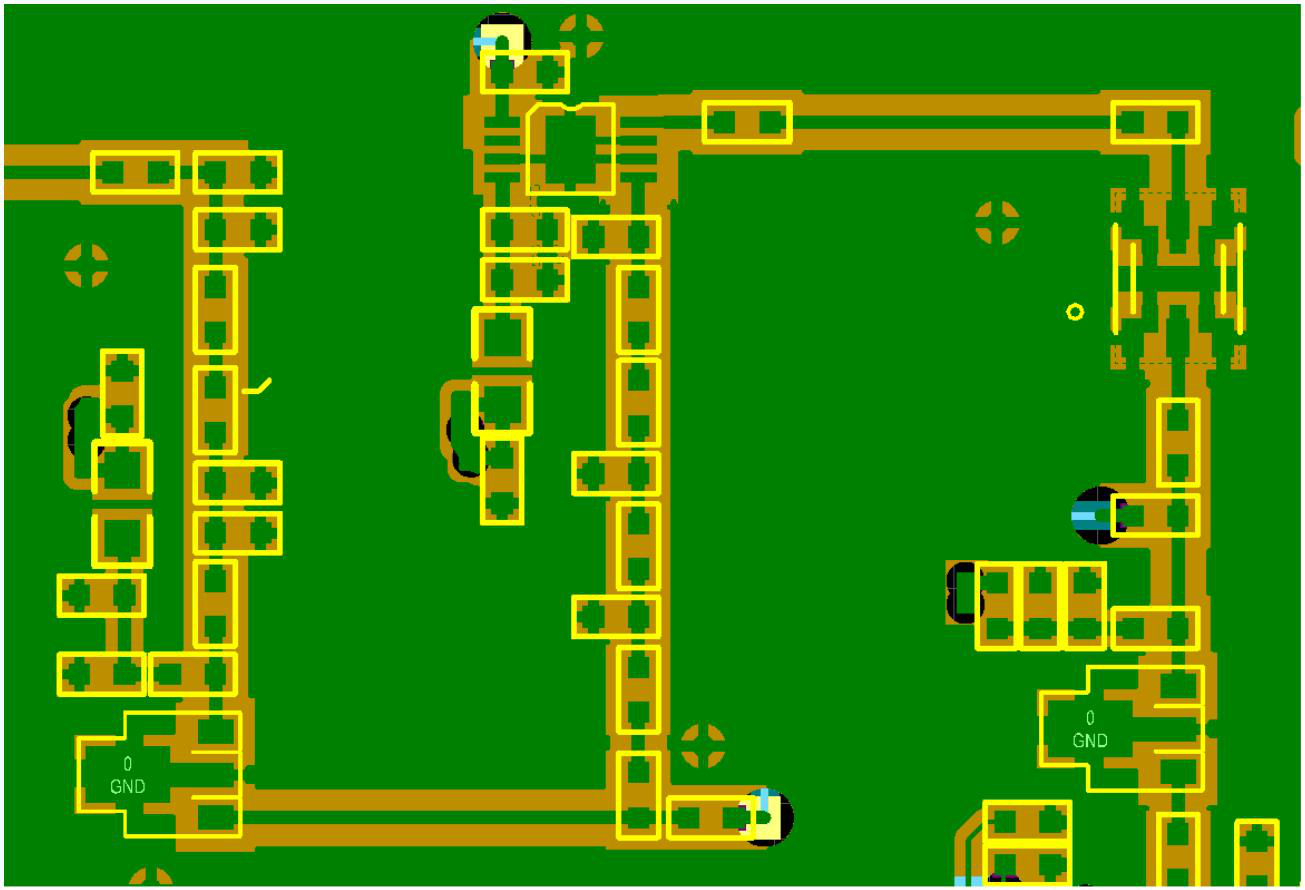
In the PCB design, in order to make the design of the high-frequency circuit board more reasonable and have better anti-interference performance, the following aspects should be considered (general practice):
When wiring high-frequency circuit boards in PCB design, use the middle inner plane as a power and ground layer to play a shielding role, effectively reducing parasitic inductance, shortening the length of signal lines, and reducing cross-interference between signals.
The wiring must be turned at an angle of 45° or a circular arc, so as to reduce the emission of high-frequency signals and mutual coupling.
The shorter the trace length, the better, and the shorter the parallel distance between the two lines, the better.
The smaller the number of vias, the better.
The wiring direction between layers should be vertical, that is, the top layer is the horizontal direction, and the bottom layer is the vertical direction, so that interference between signals can be reduced.
Increasing the grounding copper can reduce the interference between signals.
Packing the important signal lines can significantly improve the anti-interference ability of the signal. Of course, it is also possible to pack the interference source so that it cannot interfere with other signals.
The signal wiring cannot be looped and needs to be wired in a daisy chain manner.
The radio frequency part adopts multi-point grounding method for grounding treatment. Generally, 30 mil to 40 mil is used for the copper gap of the RF link. Ground holes need to be drilled on both sides, and the spacing should be as consistent as possible. For the grounding pad of the grounding capacitance and resistance on the radio frequency path, make a grounding hole as close as possible. All grounding pads on the device need to be grounded via holes. As shown in Figure 05:
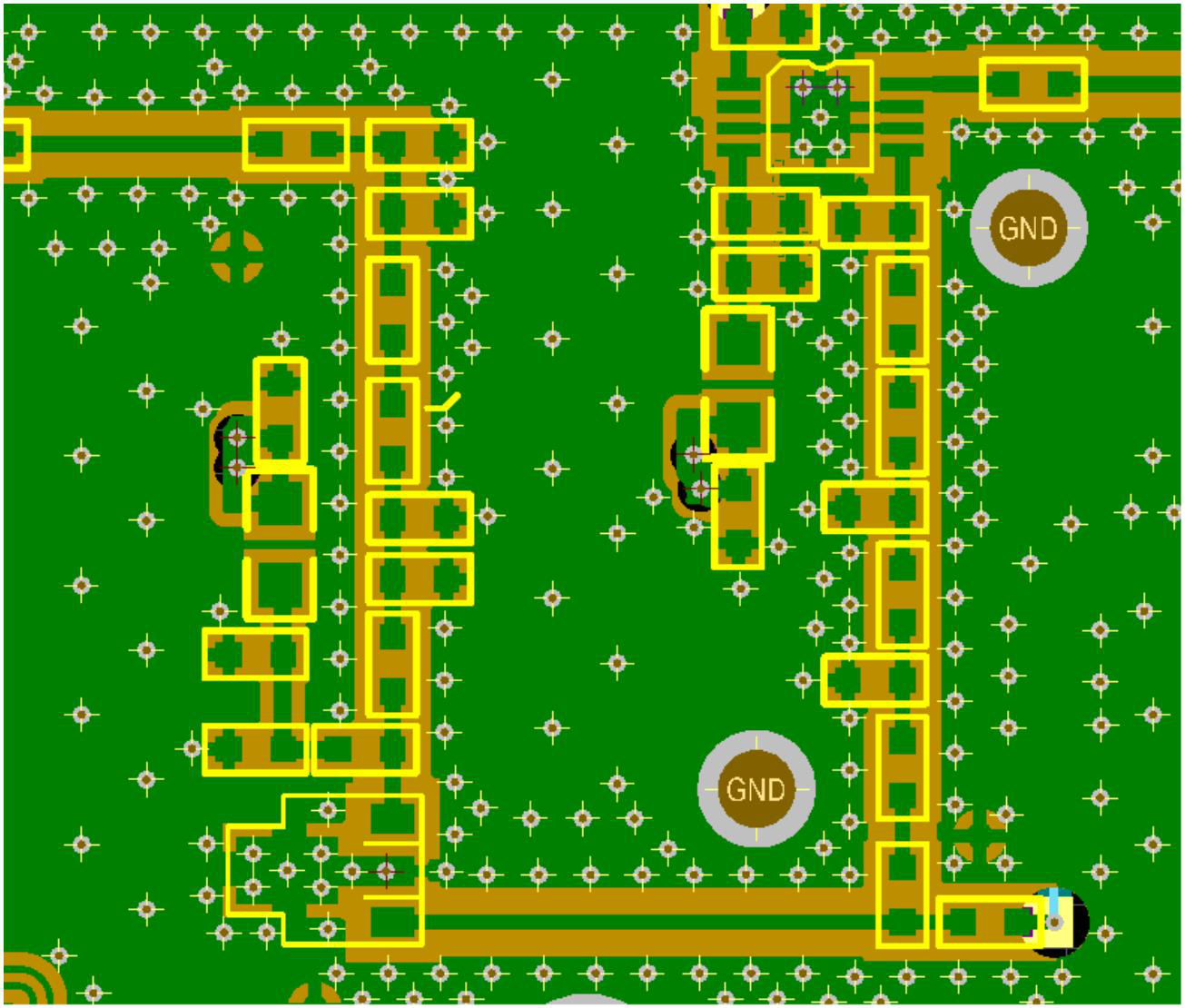
In order to make better contact between the cavity shell and the PCB board. Generally, two rows of grounding holes are punched and placed in a staggered manner, as shown in Figure 06. A window needs to be opened on the PCB compartment, as shown in Figure 07. The place where the ground copper of the PCB bottom layer contacts the bottom plate needs to be opened to make better contact. As shown in Figure 08 (the upper part of the PCB board is in contact with the base):
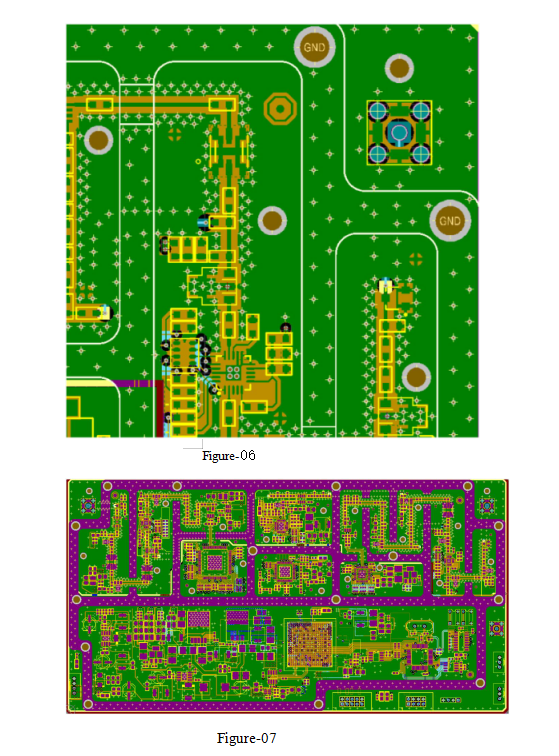
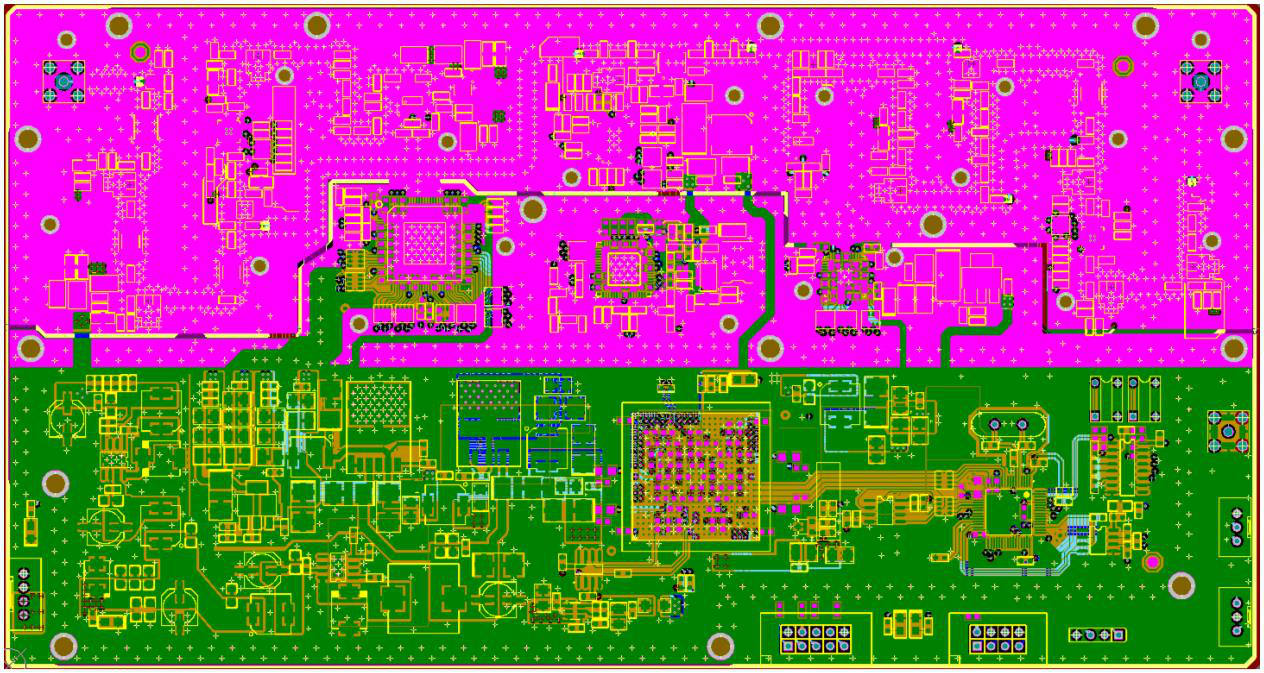
In order to have a closer contact (better shielding) between the PCB, the base and the cavity shell, it is necessary to place the screw holes on the PCB.
Screw placement method between PCB and cavity shell: Place a screw at each intersection of the compartment. In actual design, it is more difficult to realize, and it can be adjusted appropriately according to the function of the module circuit. However, there must be screws on the four corners of the cavity shell. As shown in Figure 09:
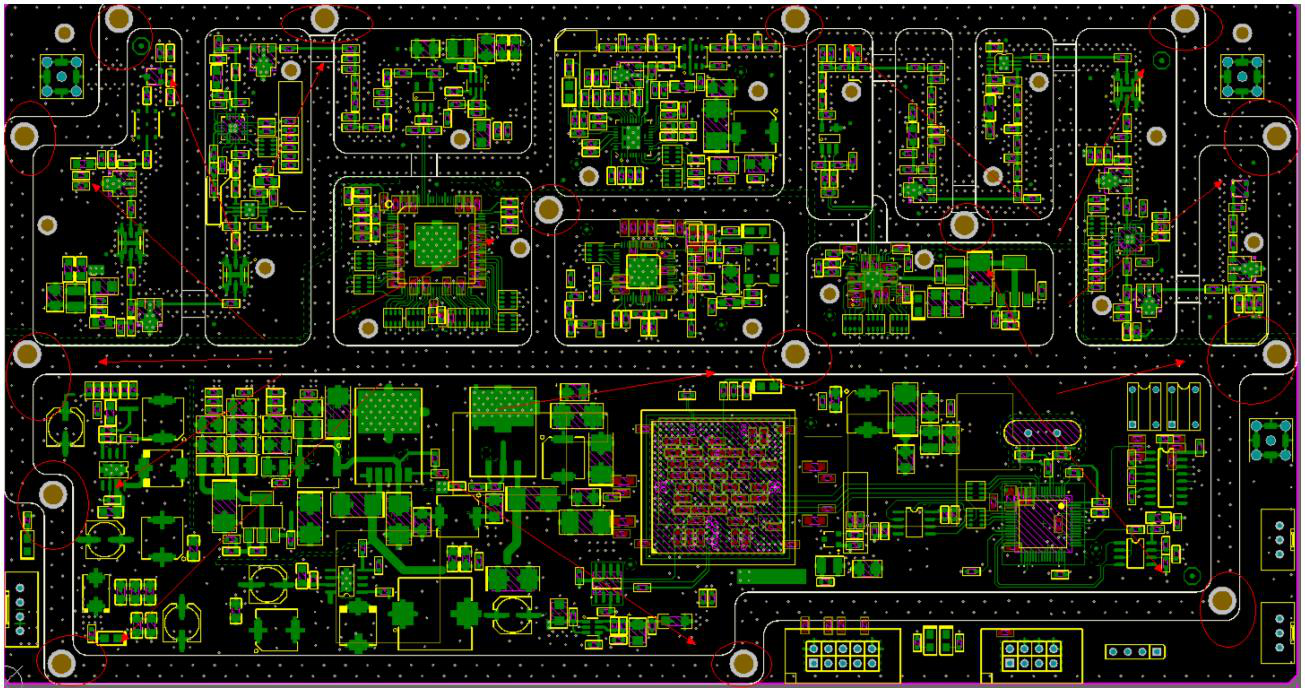
Screw placement method between PCB and base: Each small cavity in the cavity shell needs screws, and the number of screws depends on the size of the cavity (the larger the cavity, the more screws are placed). The general principle is to place screws on the opposite corners of the cavity. Screws must be placed next to SMA heads or other connectors. The SMA head or connector will not deform the PCB board during the plug-in process. As shown in Figure 10 (screw in cavity):

Still, need help? Contact Us: support@nextpcb.com
Need a PCB or PCBA quote? Quote now